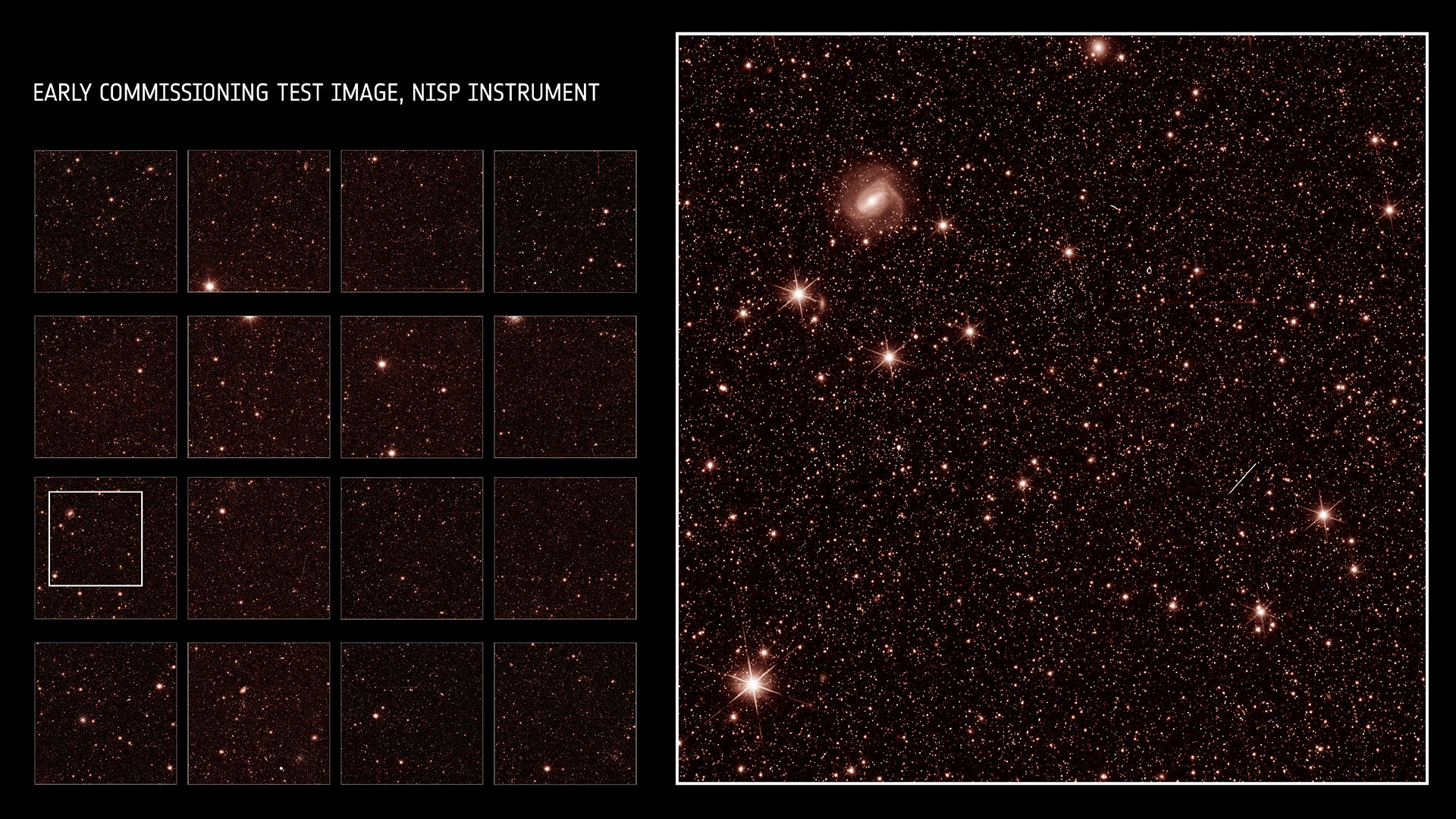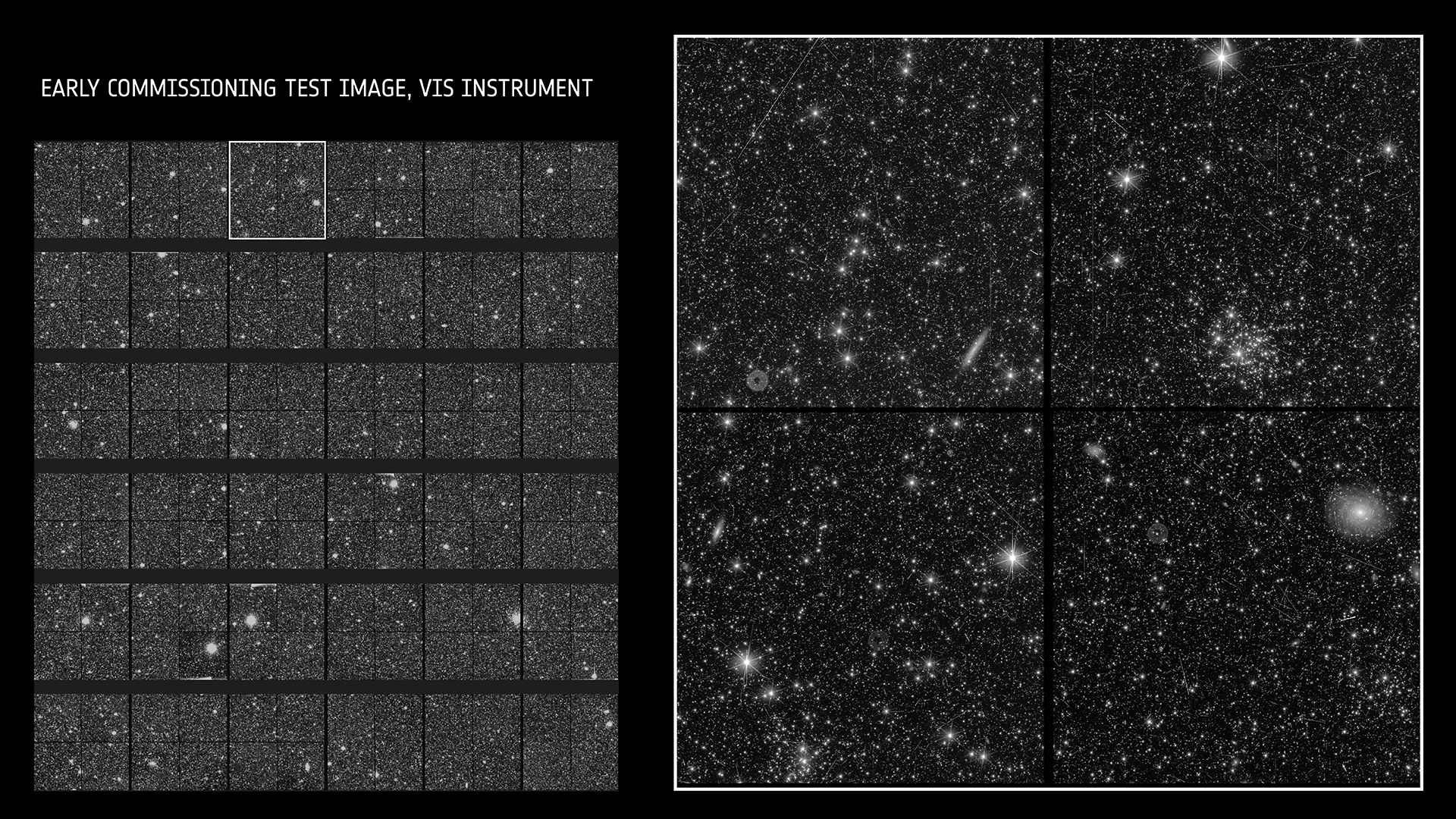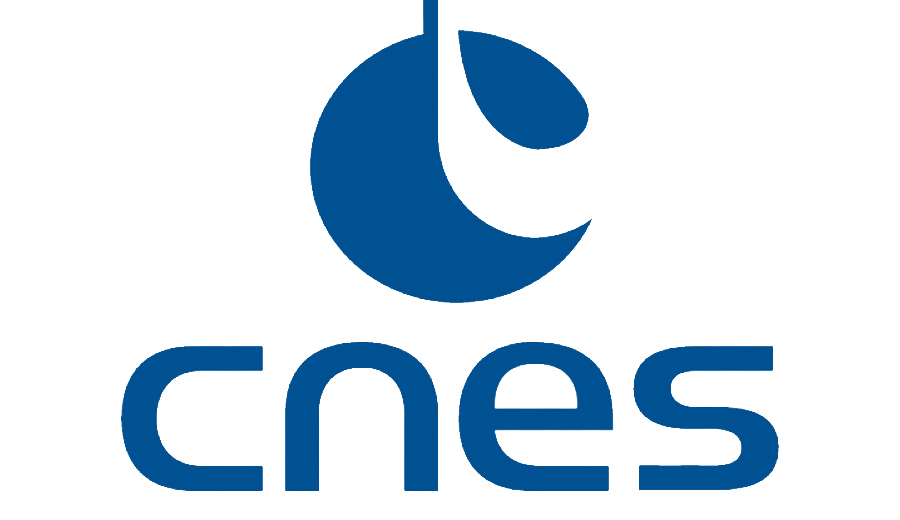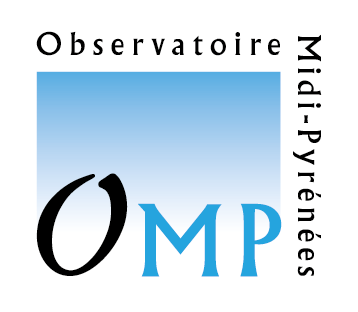One month after lift-off, the Euclid mission reveals its first observations
One month after Euclid’s launch, the European Space Agency (ESA), in collaboration with the Euclid consortium, unveils the first observations captured by the satellite as it completes its in-flight acceptance test. This is a first step for the satellite, designed to unlock the secrets of dark matter and dark energy. These first images, taken by the two instruments on board – the VIS (VISible instrument) visible imager and the NISP (Near Infrared Spectro Photometer) infrared spectrometer – reveal a wealth of detail, thanks to their incredible imaging and spectrometry capabilities. France is the leading contributor to the Euclid consortium, which receives extensive support from CNES for all its instrument management, development and production activities, as well as for mission data processing.
Both instruments have been developed by the French-led Euclid consortium, mainly involving CNRS, CEA and partner universities, and headed by Yannick Mellier at the Institut d’astrophysique de Paris (CNRS/Sorbonne University).
The first instrument is the NISP, a near-infrared spectro-photometer developed in close collaboration with CNES under the responsibility of the Laboratoire d’astrophysique de Marseille (Aix-Marseille Université/CNES/CNRS), which supplied the opto-mechanical part. It involves a number of international partners, including in France three other CNRS laboratories and its partners – the Centre de physique des particules de Marseille (CNRS/Aix-Marseille Université) in charge of the focal plane, the Institut des deux infinis de Lyon (CNRS/ Université Claude Bernard Lyon 1) and the Laboratoire de physique subatomique et cosmologie (CNRS/Université Grenoble Alpes) in charge of the detectors’ characterization – as well as CEA, which supplied the cryomotors. This instrument produces both spectra and images through color filters, enabling the distances of millions of galaxies to be estimated using two methods – spectroscopy and photometry – based on the measurement of redshifts, with the aim of drawing up a three-dimensional map of the Universe.

VIS is the probe’s second instrument. While it is under British responsibility, it benefits from three major French contributions: the focal plane and the power and mechanism control electronics from the CEA, and the calibration unit from the Institut d’astrophysique spatiale (CNRS/ Université Paris-Saclay). VIS is designed to image galaxies in the visible range, to measure the shape of galaxies with an extreme degree of precision unattainable with ground-based telescopes. Analysis of these images enables us to deduce the deformations caused by the gravitational lensing effects of baryonic and dark matter present on the line of sight. The galaxies imaged by VIS will also be combined with distance measurements from the NISP and 8 ground-based telescopes. The first scientific images are expected by the end of 2023.

About Euclid
The Euclid mission is primarily dedicated to cosmology, specifically the study of the history of expansion and the formation of the Universe’s large structures. Its aim is to increase our knowledge about two still mysterious components of our Universe: dark energy and dark matter.
Developed to explore the evolution of the dark Universe, Euclid will create a 3D map of the Universe, with time as its third dimension, by observing billions of galaxies up to 10 billion light-years away, spread across a third of the sky.
By tracing the evolutionary history of the Universe over the last 10 billion years, Euclid will reveal how it has grown and gradually structured itself, and the nature of the accelerating expansion of the Universe. From this data, astronomers will be able to deduce the properties of gravity, dark energy and dark matter, which together contribute to 95% of the Universe’s energy content.
ESA is responsible for the Euclid mission. The Euclid consortium is in charge of supplying ESA with the Euclid instruments and the major part of the Sciences Ground Segment (SGS). NASA is contributing to Euclid by supplying the NISP flight detectors and their readout electronics. The Euclid consortium currently involves over 2,200 people (425 in France) in 250 laboratories (around 30 in France) in 17 countries (Austria, Belgium, Denmark, Finland, France, Germany, Italy, Netherlands, Norway, Portugal, Romania, Spain, Switzerland, United Kingdom, Canada, United States and Japan). CNES, CNRS, CEA and partner universities are involved in France. The main manufacturers involved are Thales Alenia Space and Airbus Defence and Space, in charge of the service module and payload module respectively. Numerous other manufacturers were also involved in instrument design.
Other laboratories involved
- Laboratoire J-L Lagrange (CNRS/Observatoire de la Côte d’Azur/Université Côte d’Azur) ;
- Astrophysique instrumentation et modélisation (CNRS/CEA/Université Paris Cité) ;
- Institut de recherche en astrophysique et planétologie (CNES/CNRS/Université Toulouse III ‐ Paul Sabatier) ;
- Laboratoire Astroparticule et cosmologie (Université Paris Cité/CNRS) ;
- Laboratoire Univers et Théories (CNRS/OBSPM/Université Paris Cité) ;
- Laboratoire d’études du rayonnement et de la matière en astrophysique et atmosphères (CNRS/OBSPM/Sorbonne Université/Université Cergy Paris) ;
- Observatoire de Strasbourg (CNRS/Université de Strasbourg) ;
- Centre de calcul de l’Institut national de physique nucléaire et de physique des particules (CC-IN2P3) du CNRS.
Further Resources
- Press Releases :
- Un mois après son envol, la mission Euclid dévoile ses premières observations (CNES, CEA et CNRS-INSU)
- Euclid test images tease of riches to come (ESA)
- Euclid dévoile ses premières images (Euclid France)
- Euclid sees ‘First Light’ (Euclid Consortium)






